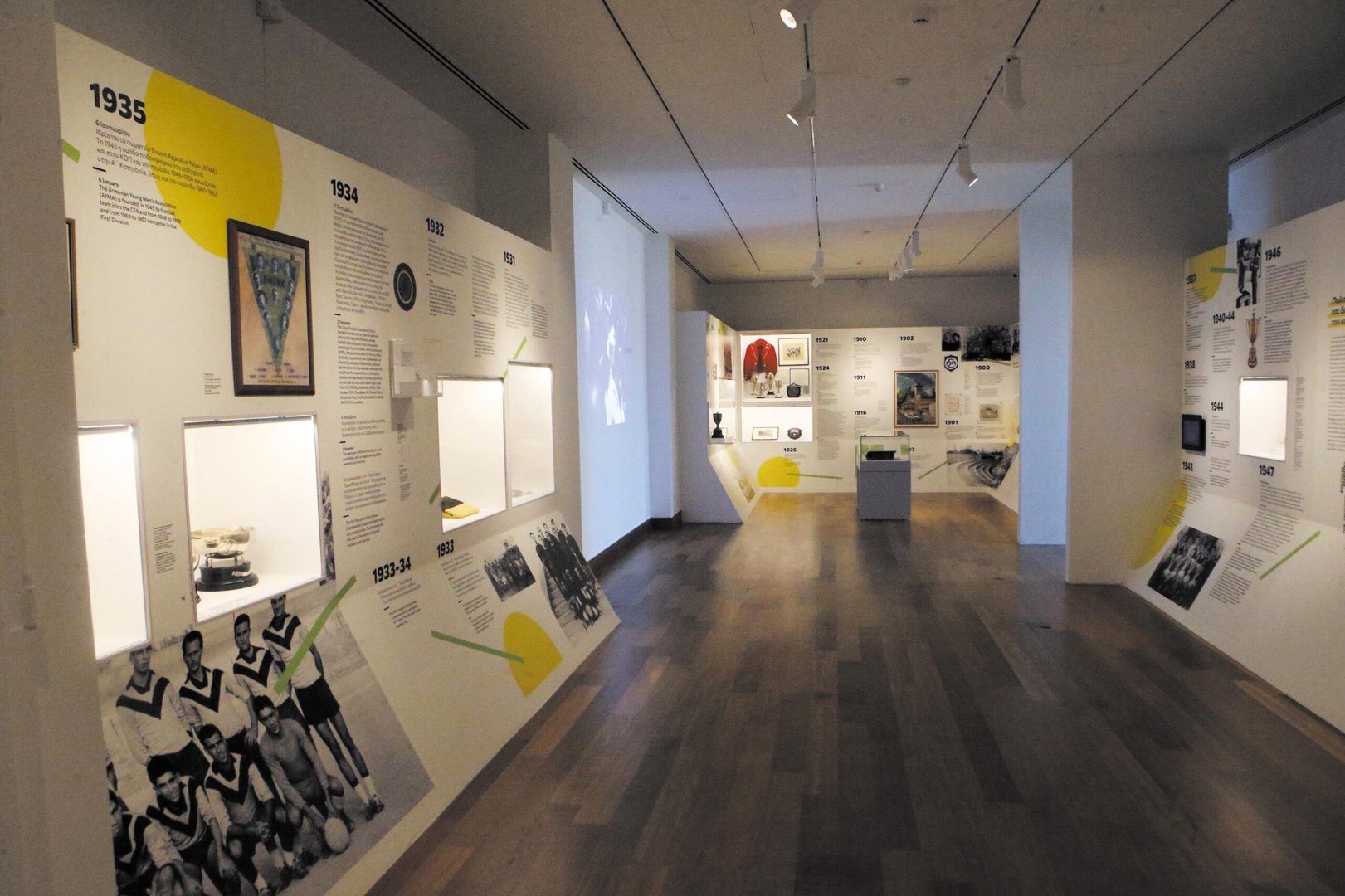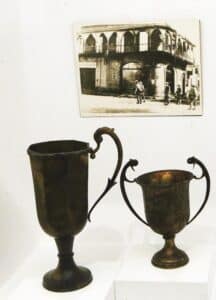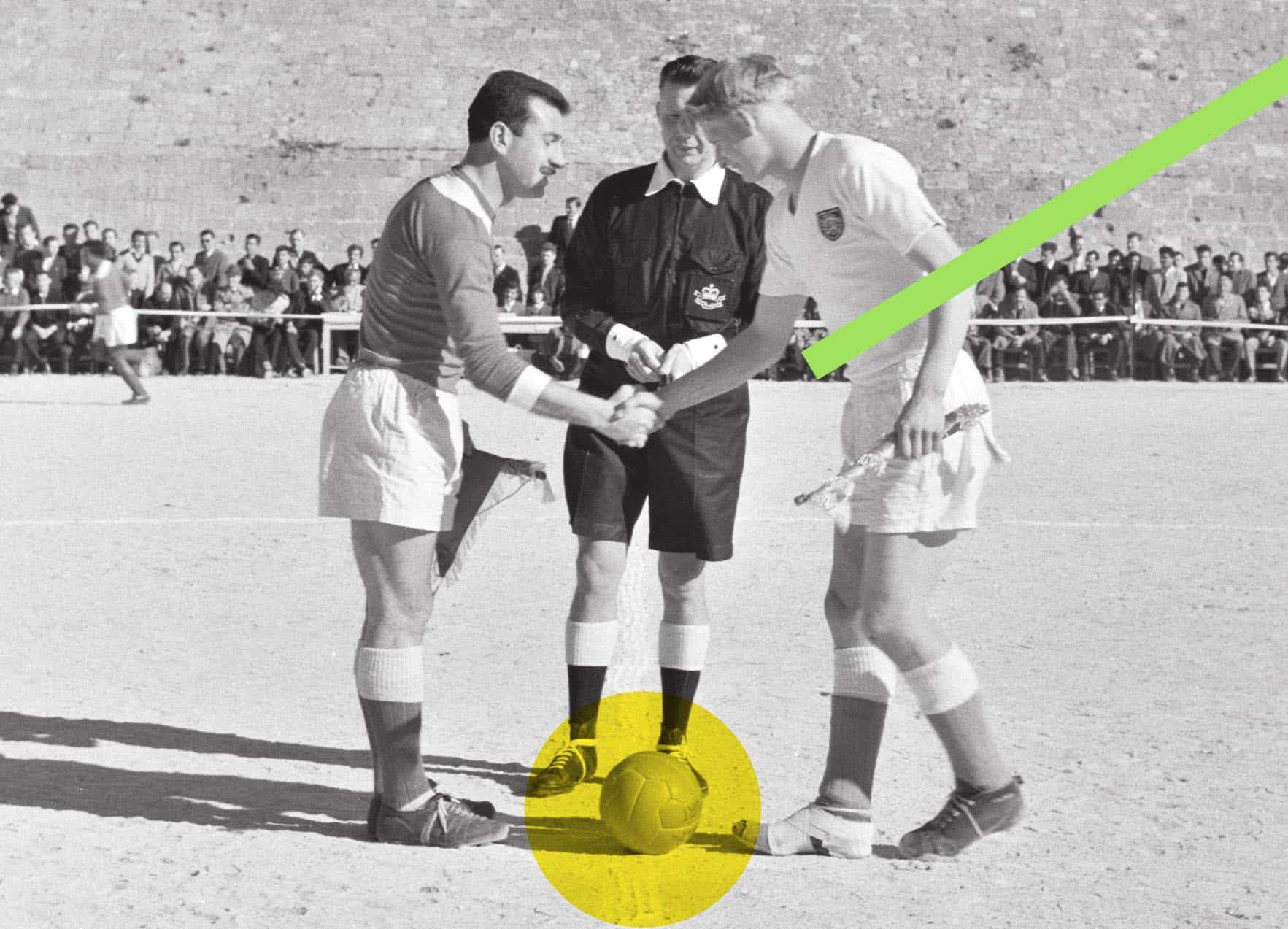The island’s favourite sport and its troubled past are inextricably linked finds ALIX NORMAN, speaking to the co-curator of an exhibition that showcases football in Cyprus
It’s a little-known fact that Cyprus’ fascination with football began at the English School. Although the British had already introduced the sport to the island in the late 1800s, it was the School’s founder, Canon Frank Darvall Newham, who really popularised the sport in the early 20th century.
“From there, football spread to local gymnasia. And the rest,” says Antigone Heraclidou, “is history. Although even now, few people know that the colours of Apoel are an homage to the sport’s local beginnings: our very first adult team consisted of ex-English School boys, playing in the only strip they had, the yellow and blue of their schooldays!”

The exhibition
The co-curator of the fascinating On the Field exhibition at the Leventis Municipal Museum of Nicosia and a senior research associate at the CYENS Centre of Excellence, Antigone is an expert on Cyprus’ colonial history, decolonisation, education and cultural heritage. But she’s also an avid football fan…
“I love football!” she exclaims. “I always have. I regularly attend local matches, and have even seen my foreign team, Manchester United, beat Sunderland at Old Trafford. It’s a huge stadium,” she enthuses. “Obviously much bigger than any we have on this small island. And yet, despite our relative size and population, football has been incredibly important to the island over the years: in many ways, the history of football in Cyprus is the history of politics in Cyprus!”

“In the 1940s, Cyprus was experiencing a time of intense political mobilisation,” says Antigone. “Parties were falling and launching; Akel was established in 1941, KEK in 1943. The church and the right began to hegemonise; the left and social parties became more vocal. We saw the beginnings of trade unions such as Sek and Peo; there were frequent strikes.”
This intense political polarisation was highly influenced by the Greek civil war, she continues. “No aspect of local life escaped. The cafés you visited, the shops you frequented, the theatres you attended – everything and everywhere suddenly had a political leaning and meaning. But nowhere was this more divisive than in football…”
In 1948, the Hellenic Association of Amateur Athletics (Segas) asked local sports teams to denounce the actions of the left and sign a declaration of support of the King of Greece. “It was, in essence, a political document,” says Antigone. “And it proved highly divisive in the sporting world. Those who refused to sign often withdrew from their clubs and established new teams; this is how Omonia was born, as members of Apoel seceded. The same thing happened with five other teams, including Nea Salamina and Orpheas,” she adds. “And for five long years, there were two different football leagues: one organised by KOP (the Cyprus Football Association), and the other by KEPO (Cyprus Amateur Football Association).

“In 1947, a clash between Nicosia and non-Nicosia teams over the presidency of KOP saw the formation of an alternate governing body,” says Antigone. “It lasted barely a year – unlike the sporting conflict of the 1950s which, to this day, remains unresolved.
“This was at the height of the troubles between Turkish Cypriots and Greek Cypriots; a very intense time,” says Antigone, who has made a particular study of the era. “During the intercommunal clashes of 1958, the British began cancelling football matches left, right and centre in a bid to contain and control large gatherings – there was a huge reaction to the forced closure of local stadia.”
Into this came the KOP decision to suspend membership for Turkish Cypriot teams. And almost simultaneously, these teams decided to establish their own league – a harbinger of what was soon to come.
“It was,” says Antigone, “a hallmark of the forthcoming division. At the time, the Turkish Cypriot team Cetinkaya was very well-known: a first division team, and one of the founding members of KOP. They had already won the Cyprus football league more than once. They were never to win it again.

The burned Olympiacos trophies
“Then, in June 1958, Turkish extremists set fire to the Olympiakos building in the centre of Nicosia – another event that typifies the local parallel between football and public feeling, between sport and politics,” she continues. “If you visit the exhibition, you can actually see the burnt trophies that were rescued from the club building!”
Alongside the trophies lie other, happier items. “There’s a whistle owned by József Künsztler, the coach of Apoel from the 1930s to 1950s and a vocal supporter of reunification both on and off the pitch,” Antigone reveals. “A burgundy blazer from the 1920s that belonged to one of the members of Nicosia’s first football association, Trust, which regularly organised ‘Ball Rouge’ events in aid of social unity. And any number of photographs demonstrating the good works of various football clubs over the decades…
“In the past, many of the teams were very active in terms of fundraising, hosting art exhibitions, celebrating important days,” says Antigone. “Today, the clubs’ outreach focuses more on youth leagues – on encouraging both boys and girls to develop an interest in the sport. And that’s a good thing, especially where women are concerned – during the course of my research, I discovered that local women’s football leagues go almost unrecognised by the official sporting associations!
“But then perhaps this is the reflection of our own times,” she concludes. “The history of football in Cyprus is really the history of the island itself – its ups and downs, its turbulence and triumphs. If you want to know more of our island’s past, look to its most popular sport!”
‘On The Field: Football. History. Nicosia’ runs until April 30 at the Leventis Municipal Museum of Nicosia. Entrance is free. For more information, visit leventismuseum.org.cy







Click here to change your cookie preferences